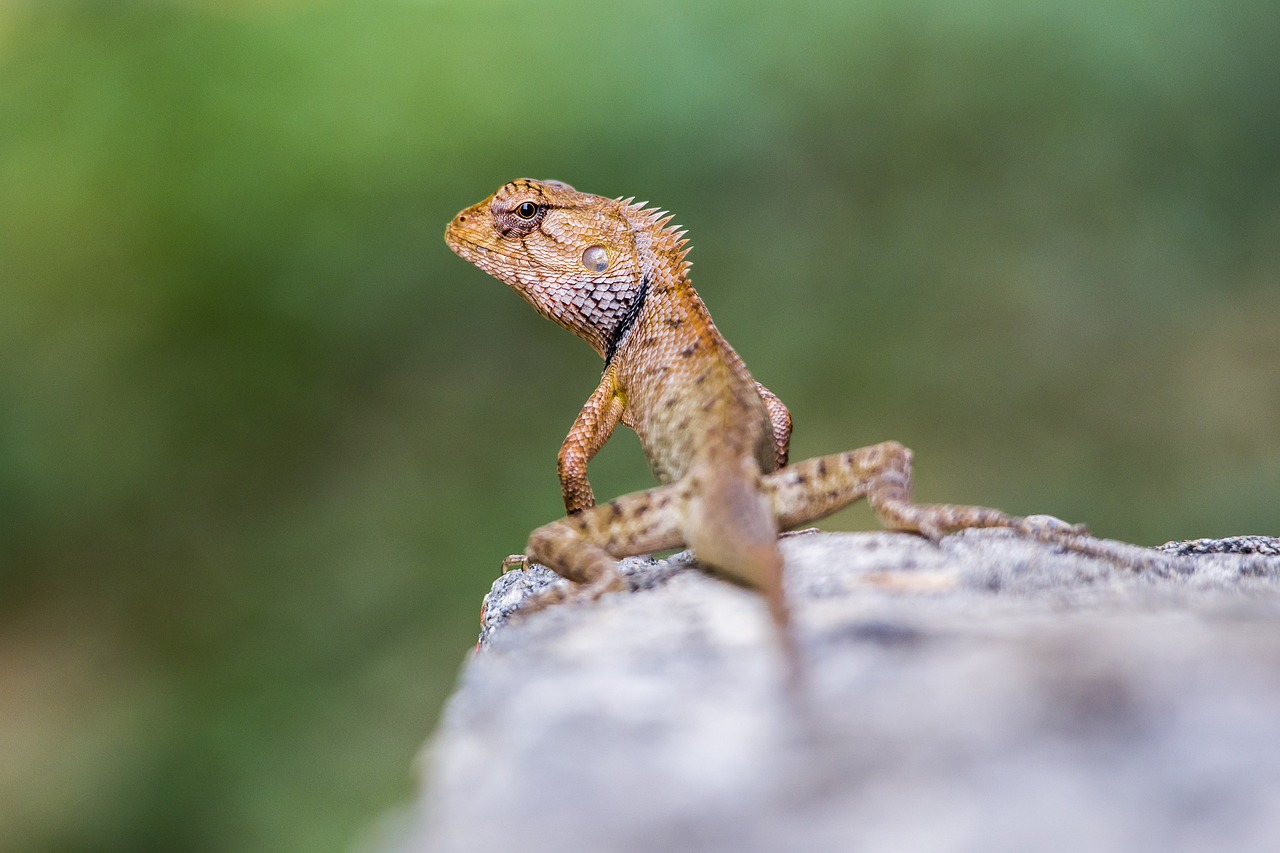The Oriental Garden Lizard (Calotes versicolor), also known as the Changeable Lizard or Indian Garden Lizard, is a species of agamid lizard native to South and Southeast Asia. Here’s a detailed description:
Physical Characteristics: The Oriental Garden Lizard is a medium-sized lizard with a slender body and long tail, typically measuring around 30 to 40 centimeters in total length, with the tail accounting for about two-thirds of its total length. It exhibits sexual dimorphism, with males and females displaying different coloration. Adult males often have bright, vibrant colors, including shades of green, blue, yellow, orange, and red, with black markings and patterns. Females and juveniles, on the other hand, tend to have more subdued colors, often with brown or grayish tones and fewer markings.
Habitat and Distribution: Oriental Garden Lizards are commonly found in a variety of habitats, including forests, grasslands, shrublands, urban areas, and agricultural lands. They are widely distributed across South and Southeast Asia, including countries such as India, Sri Lanka, Bangladesh, Nepal, Myanmar, Thailand, Malaysia, Indonesia, and the Philippines. They are adaptable and can thrive in both natural and human-modified environments.
Behavior and Diet: Oriental Garden Lizards are diurnal, meaning they are active during the day, especially in the early morning and late afternoon. They are arboreal and terrestrial, often climbing trees and shrubs in search of prey or basking in the sun. Their diet primarily consists of insects, including ants, beetles, grasshoppers, crickets, and spiders, although they may also consume small vertebrates, fruits, and flowers.
Reproduction: During the breeding season, which typically occurs during the warmer months of the year, male Oriental Garden Lizards display territorial behavior, defending their territories and engaging in aggressive displays to attract females. Mating occurs on the ground or in trees, with the male grasping the female’s neck or body with his jaws or hind limbs. Females lay clutches of eggs, typically in soil or leaf litter, which hatch after an incubation period of several weeks.
Adaptations and Defense Mechanisms: Oriental Garden Lizards possess several adaptations and defense mechanisms to survive in their environment. They are excellent climbers, with specialized toe pads that allow them to grip onto surfaces and climb trees and walls with ease. They are also capable of changing color, especially males, who may display bright colors during courtship or territorial displays and adopt more subdued colors when resting or hiding from predators. Additionally, they can detach their tails as a defense mechanism, allowing them to escape from predators and regrow their tails over time.
Overall, the Oriental Garden Lizard is a fascinating and adaptable reptile species, valued for its ecological role as a predator of insects and its ability to thrive in a wide range of habitats. Its striking appearance and behavior make it a popular subject for wildlife enthusiasts and photographers across its native range.
Views: 307
Subscribe to the newsletter:
